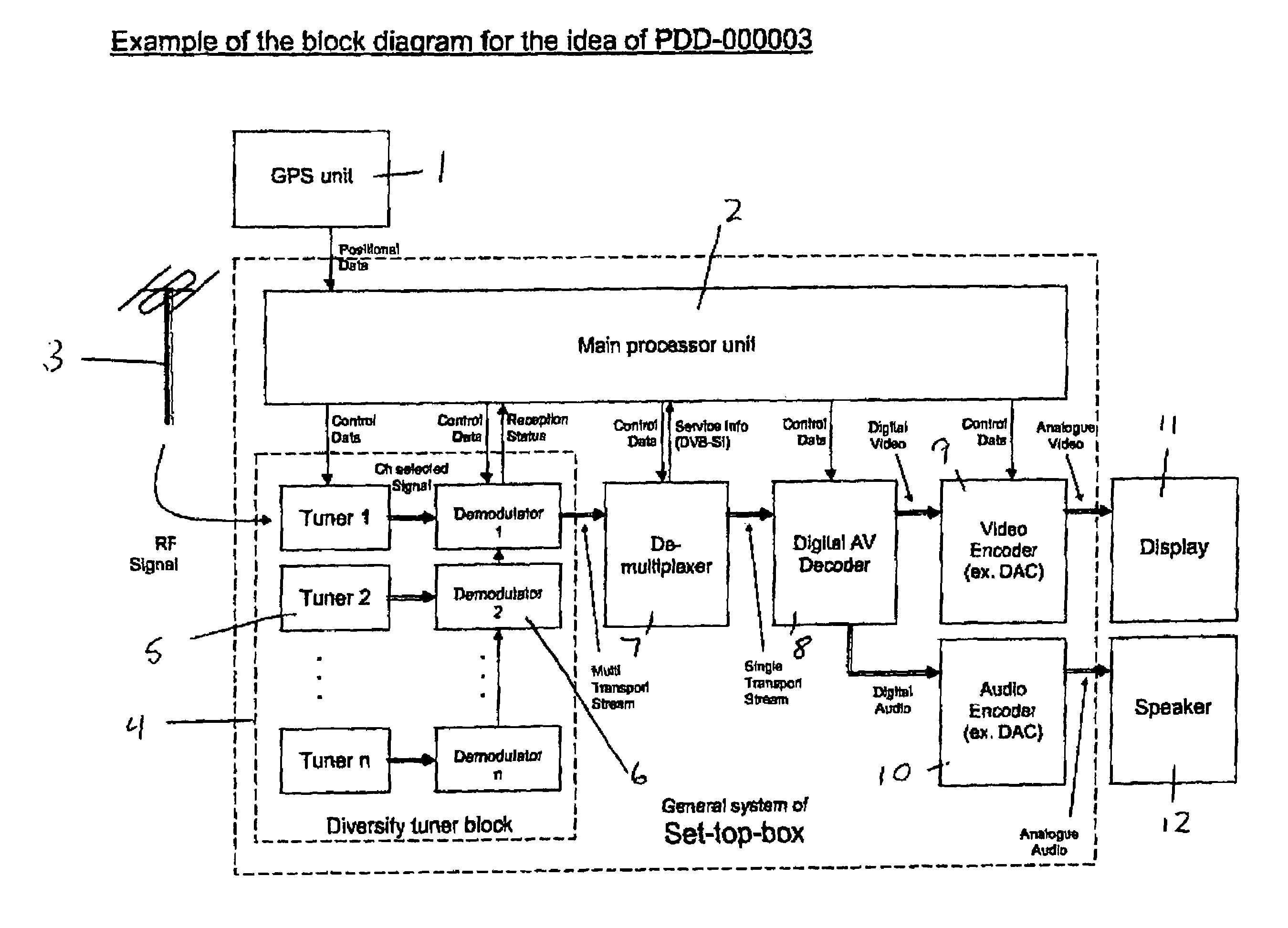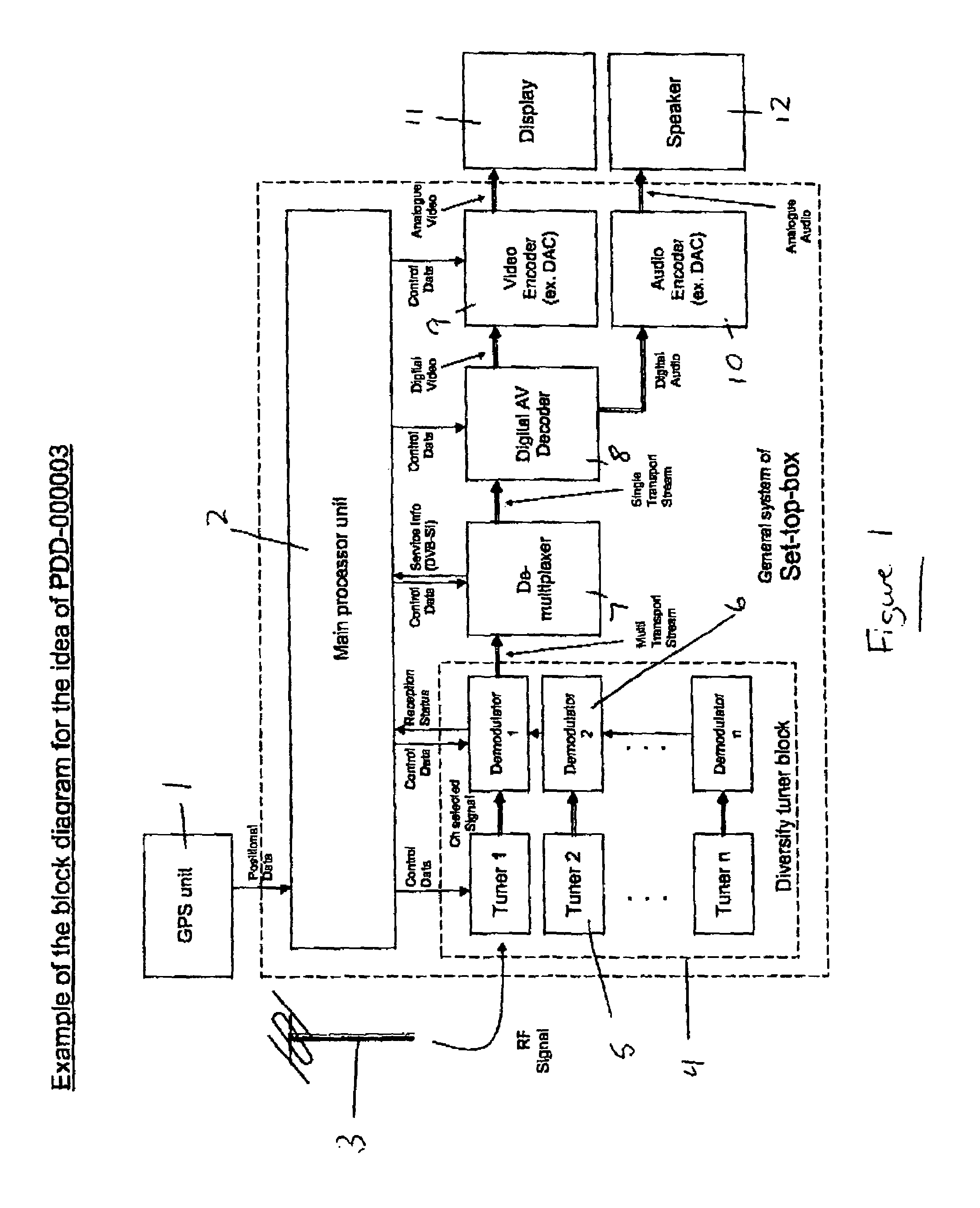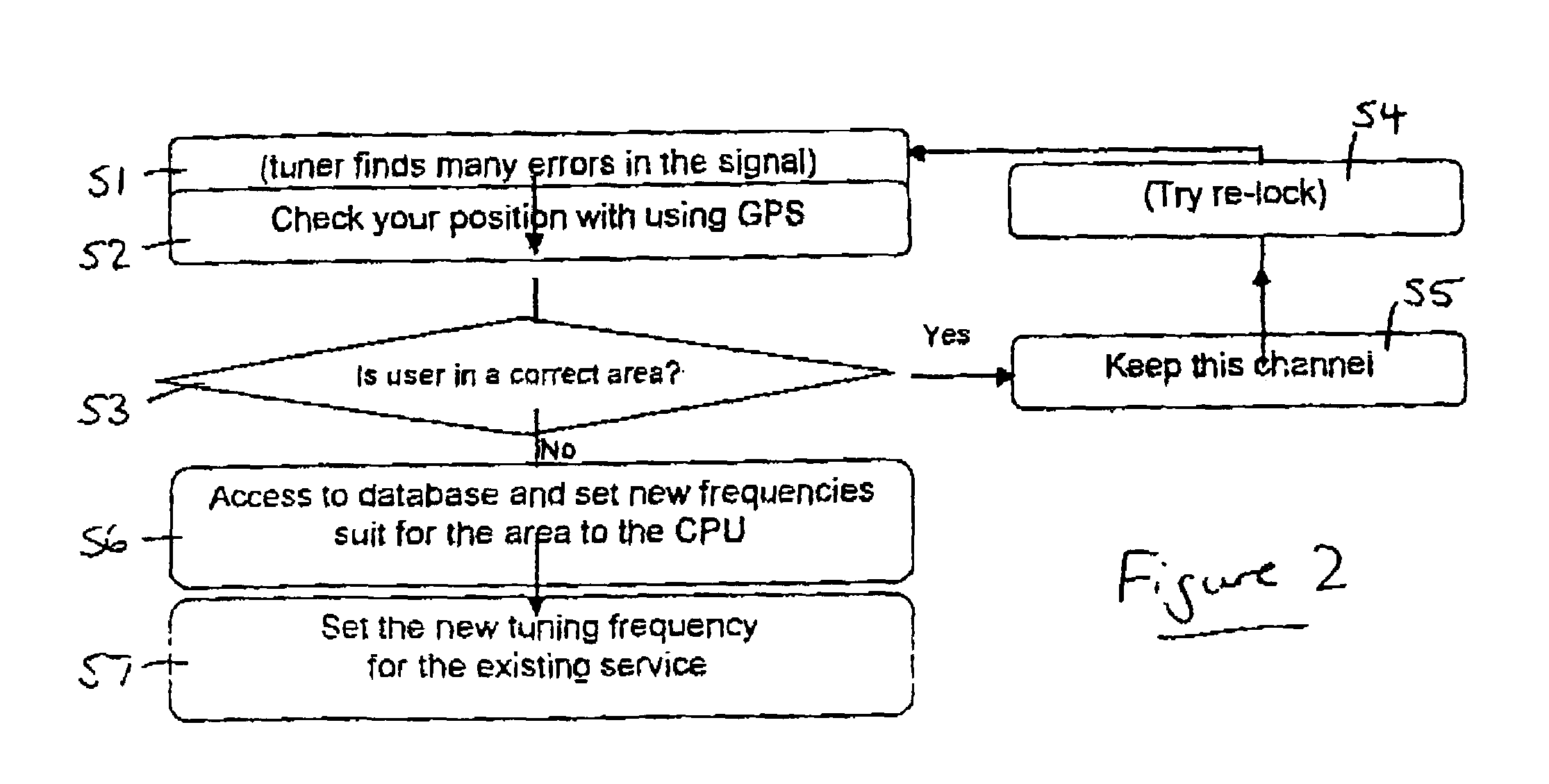Automatic tuning system for a mobile DVB-T receiver
a technology of automatic tuning and mobile dvb-t receiver, which is applied in the field of automatic tuning system of dvb-t receiver, can solve the problems of inconvenient re-tuning and difficulty in achieving i
- Summary
- Abstract
- Description
- Claims
- Application Information
AI Technical Summary
Benefits of technology
Problems solved by technology
Method used
Image
Examples
Embodiment Construction
[0035]Referring to FIG. 1, an example of the invention is employed in a DVB-T receiver system which employs a global positioning system (GPS) unit 1, in order to provide positional data to a central processing unit (CPU) 2 which controls the receiver system. The receiver system is generally housed in a single housing so that all of the components of the system are provided in a single, portable device.
[0036]Use of the GPS unit 1 allows the system to accurately assess the position of the receiver, so that this can then be related to the frequency of an RF signal being received by antenna 3. A tuning block 4 comprises a number of tuners 5, together with a number of corresponding demodulators 6, each of which is connected to one of the tuners 5 and its neighbouring demodulators. When a DVB-T standard signal is received, each tuner acts as a band-pass filter and passes an output signal, which may be in the form of an RF, IF or baseband signal, and which has a certain frequency and bandw...
PUM
 Login to View More
Login to View More Abstract
Description
Claims
Application Information
 Login to View More
Login to View More - R&D
- Intellectual Property
- Life Sciences
- Materials
- Tech Scout
- Unparalleled Data Quality
- Higher Quality Content
- 60% Fewer Hallucinations
Browse by: Latest US Patents, China's latest patents, Technical Efficacy Thesaurus, Application Domain, Technology Topic, Popular Technical Reports.
© 2025 PatSnap. All rights reserved.Legal|Privacy policy|Modern Slavery Act Transparency Statement|Sitemap|About US| Contact US: help@patsnap.com



